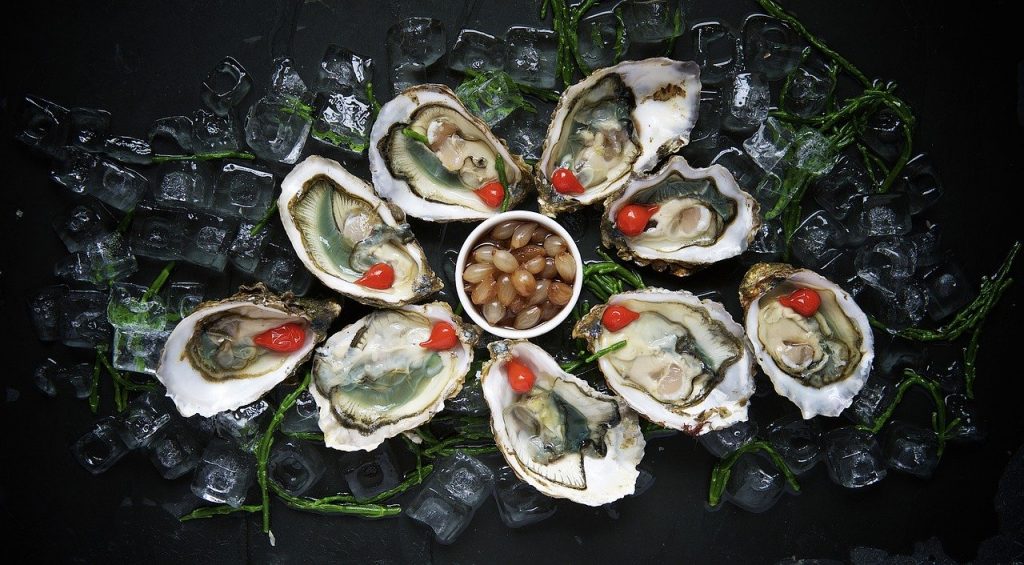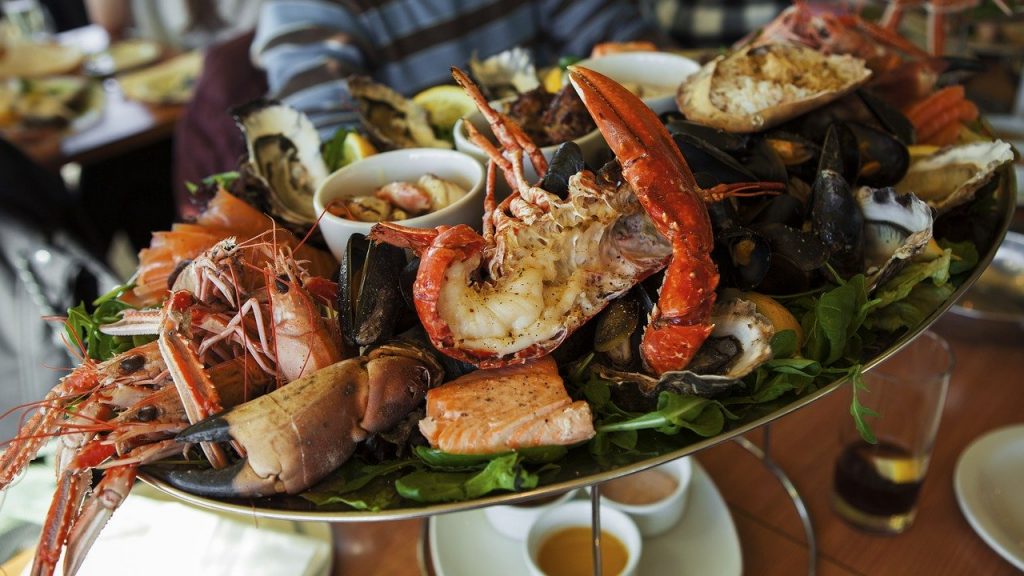[Article updated on 19/09/2023]
Fine dishes, rich in proteins (20% per 100 grams on average) and minerals, with very little lipids (only 2%), seafood and shellfish offer a wide range of taste and preparation. Hot or cold, they will delight your taste buds!
These are slimming foods that fill you up quickly, are good for your health and can therefore be consumed without moderation!
Be careful, however, with sauces and wine who can accompany them!
Which seafood and shellfish to choose?
The crustaceans
They are rich in iodine, phosphorus, selenium and fluorine in addition to being rich in vitamin A and being a good source of vitamin D.
They are low in fat and contain mainly omega 3.
This is the case for oysters (0.5g per 100g), mussels (0.7g) and shrimps (0.3g). However, some shellfish, such as crab, also have high cholesterol levels.
They fill you up very quickly and are ideal as a starter accompanied by a small avocado and grapefruit salad with a little lemony and slightly spicy vinaigrette.
There are 3 families of crustaceans:
- with a shell: like shrimp, crab, langoustine, lobster which are eaten cooked;
- sea snails: periwinkle and whelk which are eaten cooked in a stock;
- echinoderms: sea urchins are eaten raw or cooked.
Shells and molluscs
They also provide many trace elements such as iodine, magnesium, vitamin B12. They are eaten cold or hot.
You can find a wide variety:
- shells: oyster, mussel, whelk, clam, scallop, clam, razor clam, varnish, almond, clam, scallops, tellina. They are often eaten as a main course, accompanied by an assortment of light sauces with herbs (chopped shallots, dill, tarragon, etc.) and lemon;
- molluscs without shell: squid, cuttlefish, octopus. They can also be enjoyed as a dish, simmered in a little Armorican sauce (tomatoes, garlic, onions, etc.) for example.

Some tips to ensure their freshness and quality
To be sure of the quality of your seafood products, it is important to know and respect the fishing and consumption season in order to protect the species and ensure their freshness.
It is also during these periods that they are the cheapest.
In December, it’s the season for scallops, shrimp, lobster, oysters and mussels.
In January, we find the periwinklesx, whelks, scallops, shrimps, oysters, mussels and clams.
How do you know if your seafood and shellfish are really fresh?
The origin of the shellfish must be safe because they filter a considerable quantity of water and can therefore accumulate very pathogenic microbes, bacilli, salmonella from infectious diseases or even the hepatitis virus…
When purchasing, you must be careful: the packaging date, place of origin and packager number must be clearly indicated.
- Regarding oysters, scallops and mussels, they must be well closed and difficult to open. They close automatically as soon as you touch them and retract as soon as you touch the edge with a knife tip. When washing, they must not rise to the surface of the water.
- THE langoustines and shrimps should be shiny and wriggling. They should have black, bright eyes and their muscles should be firm. Finally, their odor should be weak or non-existent.
- It is better to buy alive and vigorous, your crabs and sea spiders, lobsters, lobsters : the legs folded under the body and the mobile eyes.
For the same size, it is better to take the heaviest crustacean.
- For octopuses, cuttlefish, squid, squid and other small octopuses : the flesh must be firm, pearly white and shiny, the tentacles must be resistant, the smell pleasant and any blood stains must be very red.

How long do they keep?
Oysters will keep for up to ten days (after removing from the water) in the vegetable drawer. Other live seafood can be kept for a maximum of 48 hours in the refrigerator.
Idea for light and refined New Year’s Eve menus
- Smoked salmon canape on slice of bread with rye and its fresh cheese and chives sauce
- Oyster gratinated with herbs
- Pan-fried lobster tail with herbs accompanied by leek and carrot fondue with fennel seeds
- Sweet treats and basket of fresh exotic fruits
Have a great holiday!
